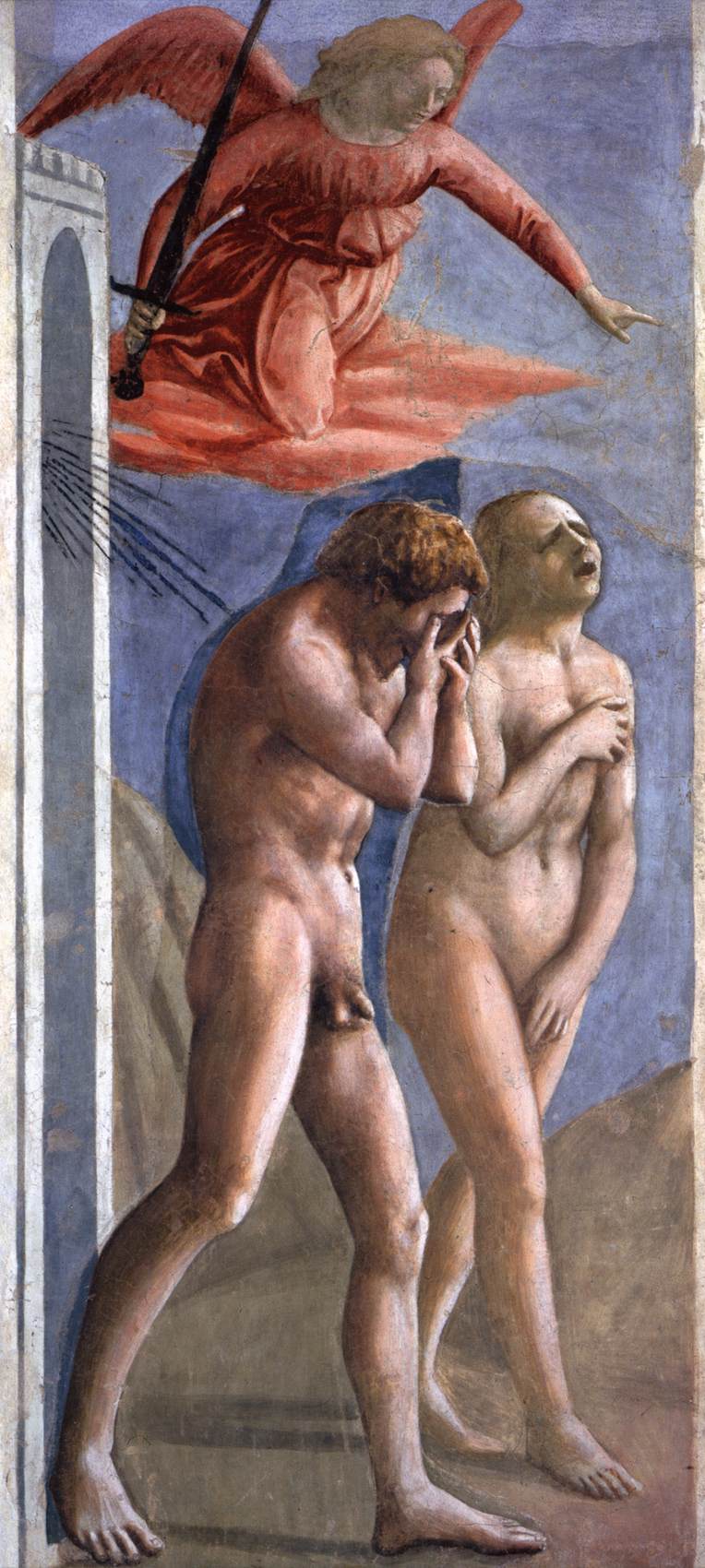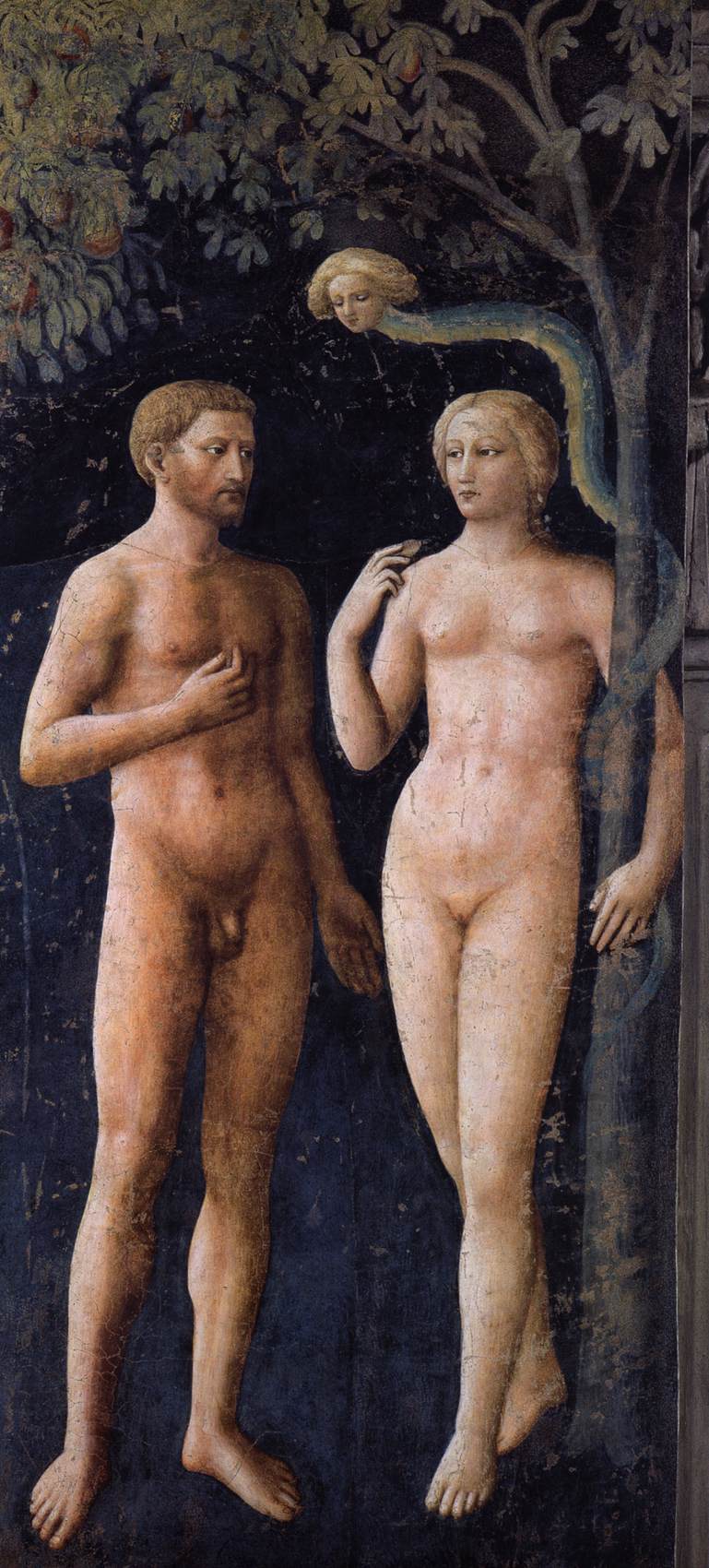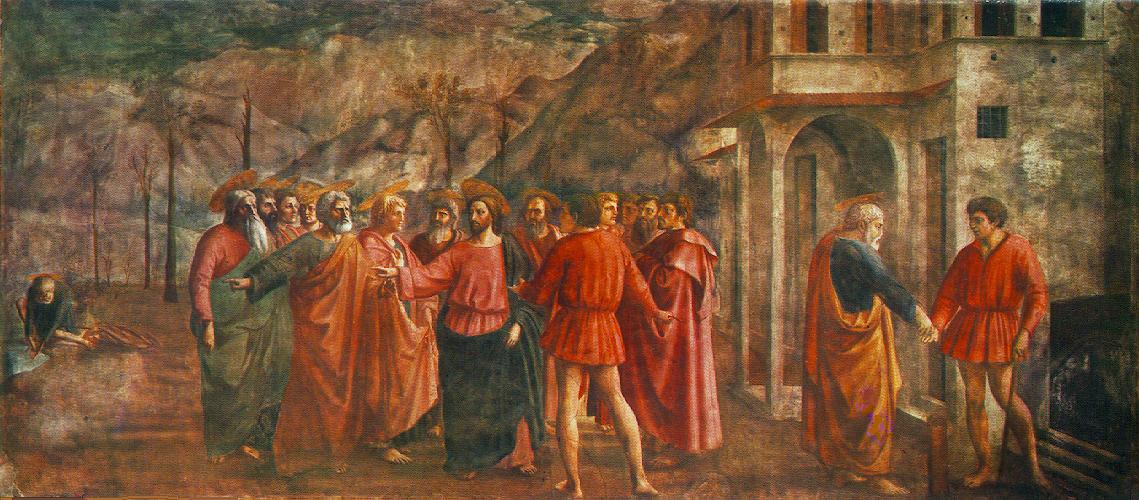Tommaso di Ser Giovanni di Simone, known as Masaccio, was born on 21 December in 1401. Regarded as the first great painter of the Quattrocento, Masaccio is responsible for building on the innovations of Giotto to develop a grounded sense of naturalism which would define Florentine art of the early Renaissance. His painting technique relied on earthy tones and monumental figures, using a single light source to create a tangible three-dimensionality through subtle gradations of light and shade.
In 1422 Masaccio joined the painters’ guild in Florence, though his painterly style owed much more to his contemporaries Brunelleschi and Donatello, whose innovations in mathematical proportions and classical forms he imbibed in his own art. Masaccio’s paintings, such as the Trinity in Santa Maria Novella, exhibit a convincing sense of space as his architectural features seemingly recede into space, anticipating Leon Battista Alberti’s notion of painting as reflecting a ‘window onto the world’.
Masaccio is probably best known for his decoration of the Brancacci Chapel in Santa Maria del Carmine, Florence. Along with his contemporary Masolino, Masaccio decorated the walls with an ambitious fresco cycle depicting scenes from the life of St. Peter. Masaccio’s classicism is accentuated by the presence of Masolino’s more Gothic approach, especially evident in each artist’s rendition of Adam and Eve, which face each other at the entrance of the chapel. Masaccio incorporates the real window in the chapel to determine the source of light, which defines the muscular form of Adam. The emotions are strikingly real, with Eve’s mask-like face emitting the first audible wail in Renaissance painting.
The Tribute Money is the masterpiece of the Brancacci frescoes. Through intelligent glance, gesture, movement, and precise one-point perspective, Masaccio creates a world in which Christ and the apostles communicate both with each other and with their audience. Through careful study of the natural world, Masaccio is able to display with mastery the subtle anticipation and agitation of the apostles, who are aware that they are about to witness a significant event and wait with bated breath.
The circumstances surrounding Masaccio’s untimely death are uncertain, but he died in Rome in 1427 or 1428. Despite his very short career, Masaccio left a lasting impact on subsequent artists and his contribution to the Renaissance style cannot be overstated.
Reference: Diane Cole Ahl ed., The Cambridge Companion to Masaccio, New York: Cambridge University Press, 2002.
Trinity, c.1425, fresco, Santa Maria Novella, Florence.
View of the Brancacci Chapel, Santa Maria del Carmine, Florence.
Expulsion of Adam and Eve from the Garden of Eden, 1426-27, fresco, Brancacci Chapel, Santa Maria del Carmine, Florence.
Masolino, The Temptation, 1426-27, fresco, Brancacci Chapel, Santa Maria del Carmine, Florence.
Tribute Money, 1426-27, fresco, Brancacci Chapel, Santa Maria del Carmine, Florence.
(Images: Web Gallery of Art)
Further Reading: John T. Spike, Masaccio, New York: Abbeville Press, 1995.




